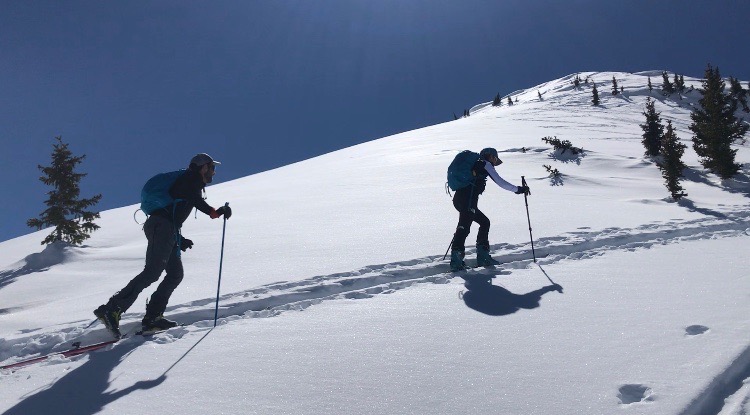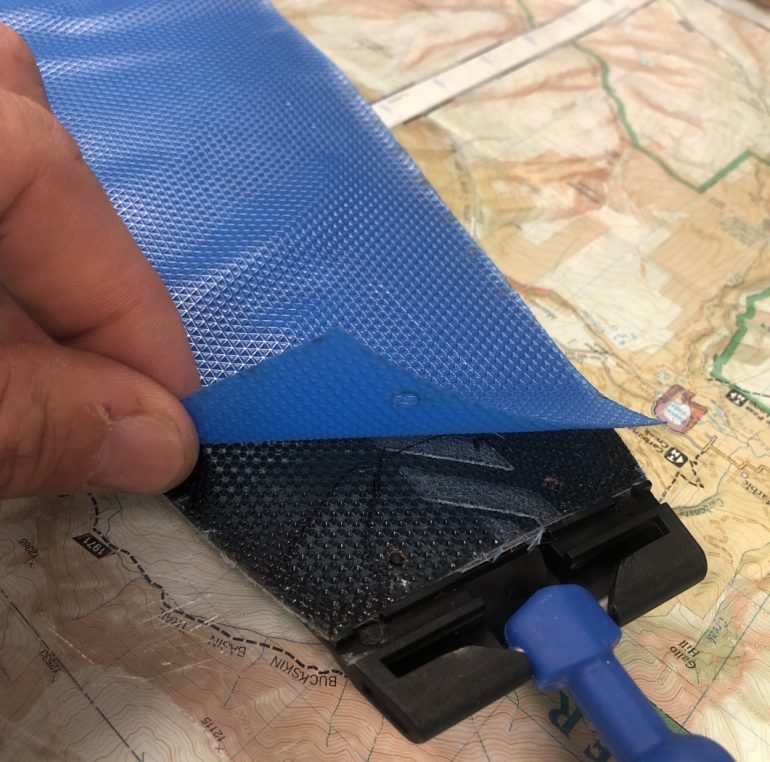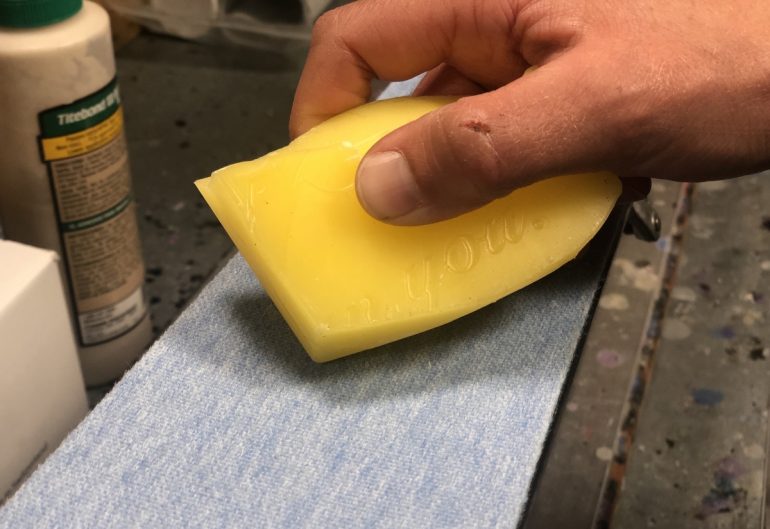(Shop for climbing skins at Backcountry.com or Cripple Creek.)
Care and best practices for your trusty climbing skins
Without a good pair of climbing skins to get them up the mountain, the fastest and lightest touring setups are hopelessly relegated to skiing downhill. These pieces of glue and hair are typically afterthought. It’s easy to spend time researching and maintaining the flashy boards, boots and bindings, but it’s the lowly climbing skin that really makes the magic of winter travel possible.
I have a very close friend and avalanche forecaster who was continually frustrated about how often he had to replace his climbing skins. Of course, the daily rituals of an avalanche forecaster will inevitably wear out a skin faster than the average tourer, but I was still surprised to find that his skins would rarely make it through a season. He told me of his meticulous care, including drying them, fully open and hanging over night. He was also insistent about using a mesh skin saver for extended periods of storage.
Meanwhile, I remain one of the most irresponsible skin owners I know and often forget to take them out of my pack all together as I race from morning dawn patrol to work. Sheepishly I’ll pull them out of my pack days later and still a little wet. So why was I getting over twice the days on a pair of skins than my more attentive friend? To coax extra performance and longevity out of a pair of trusty climbing skins there are some pitfalls to avoid and some simple best practices to employ.
How to dry after use
The world of uphill skiing is a cold and icy one and climbing skins get wet. There is nothing worse than leaving your skins out in the cold overnight to then have them immediately fail on the uptrack.
So, it’s a common misconception to dry them out within an inch of their lives. Overheating or over-drying the glue on your skins will decrease the amount of days you get to use them before reaching for a new pair or the dreaded transfer sheets to reglue.
Exposing the glue to the air while drying is a major factor in degradation of the glue. Although leaving your skins open to dry out for an entire day only imperceptibly breaks down the glue, doing this repeatedly throughout a season or two can deteriorate the adhesive. Feel free to separate them for an hour or two while they dry, but it is best to store a skin folded glue to glue to keep it fresh. Keep in mind that the plush will still climb a skintrack, even if its a little damp.
Heat can also be deadly to skin glue, so make sure you leave plenty of distance between your skins and the woodstove on your next hut trip.
How to store climbing skins
In the day-to day use of skins, simply getting them mostly dry is good enough but extra care should be taken for letting them hibernate for more than a week or two. For any long term storage the rule of heat still applies. Leaving them by a heat source means you will likely have glue on your skis come the next big day in the mountains. Storing them in a cool dry place is best. Chest freezers are a sworn summer tactic by some and although extreme, can hold your skins in cryogenic stasis until that wonderful time of year when flakes fly again.
In recent studies performed by Pomoca, mesh skin savers can also be a no no. Counter to popular belief, the plastic mesh of skin savers can allow air to dry out or glob your glue when you are not using them. However, some skins are nearly impossible to separate after long storage so use a piece of non perforated plastic to keep air off the glue and to prevent the two adhesive sides from sticking together.
Waxing for climbing skins
Dry bases on your skis can wreak havoc on older pairs of climbing skins. Waxing your skis every few times you go skiing is ideal although sometimes unrealistic. When you skis appear white and chalky on the bases, you have waited far too long. Wax your skis early and often to make sure your skins don’t leave a sticky mess behind.
Waxing the plush side of your skins is also important for maximum performance. Just as wax for your ski bases repel water and snow particles as you slide downhill, wax coated on the hairs of your climbing skins increases glide and prevents glopping on the way up. High-end skins like Pomoca Climb Pro S-Glide for skiers or the Jones Nomad Pro for splitboarders, come with a hydrophobic treatment from the factory. However, even the best treatment will breakdown over a season of skinning, and then it’s time to bring out the wax. There are dozens of products marketed specifically to use with skins, but even a normal warm weather wax will work just fine.
Crayoning the wax on your ski will work for a lap, but if you have the time to quickly melt the wax with an iron, it’ll last longer. Rub the wax against the grain for maximum penetration between the follicles and quickly run an iron on medium heat from skin tip to skin tail. Two or three quick passes will do it, but make sure you do not overheat the glue (see above for the risks of overheating glue).
With a little bit of practice and the correct equipment, winter peaks are ever within reach. Next time you are traveling straight up a groomer at the resort or kick turning your way to a new summit, give a little nod of appreciation to your climbing skins that keep you moving forward in the mountains.
(Shop for climbing skins at Backcountry.com or Cripple Creek.)
Doug Stenclik is an avid skimo racer and ski mountaineer who lives for sharing the amazing sports of ski touring and splitboarding. Since his first time on skins he was hooked and the obsession has taken him all over the United States and the world pursuing the human powered ski turn. He founded Cripple Creek Backcountry in 2012 and took over the Colorado Ski Mountaineering Race Cup in 2014 to spread knowledge and the love of the sport. In 2019 he took a step back from the ski shop and race promoter life to become a publishing partner with WildSnow.



